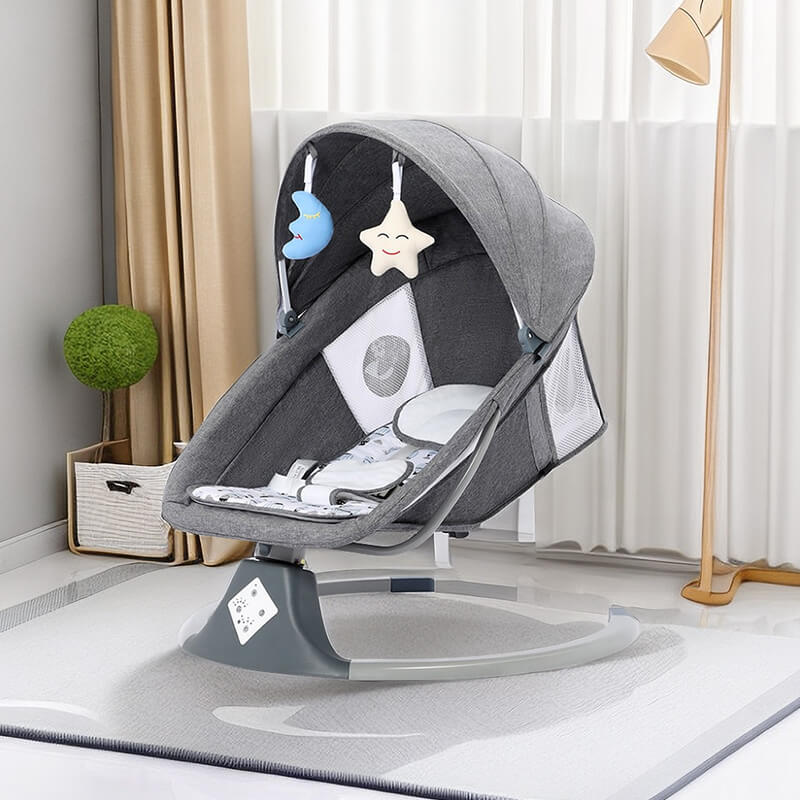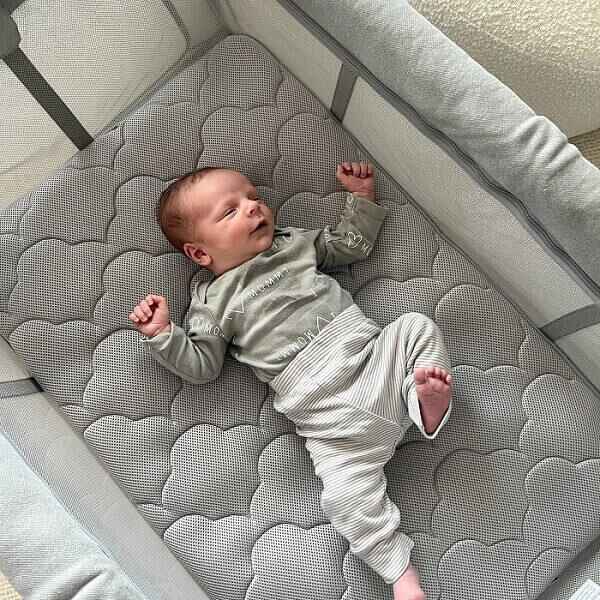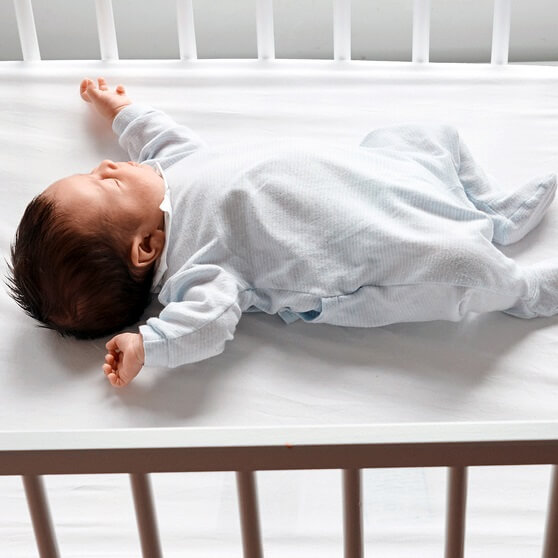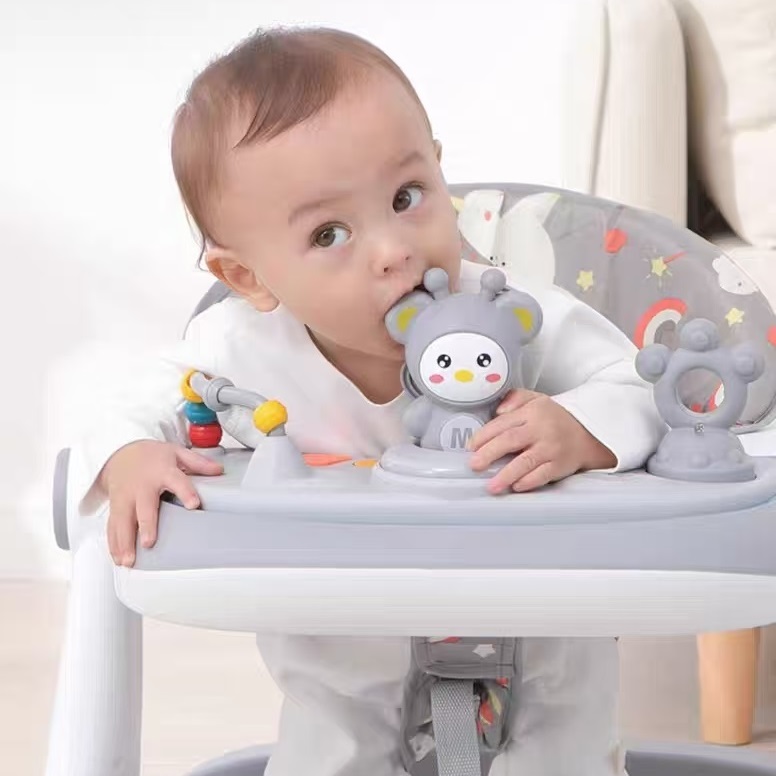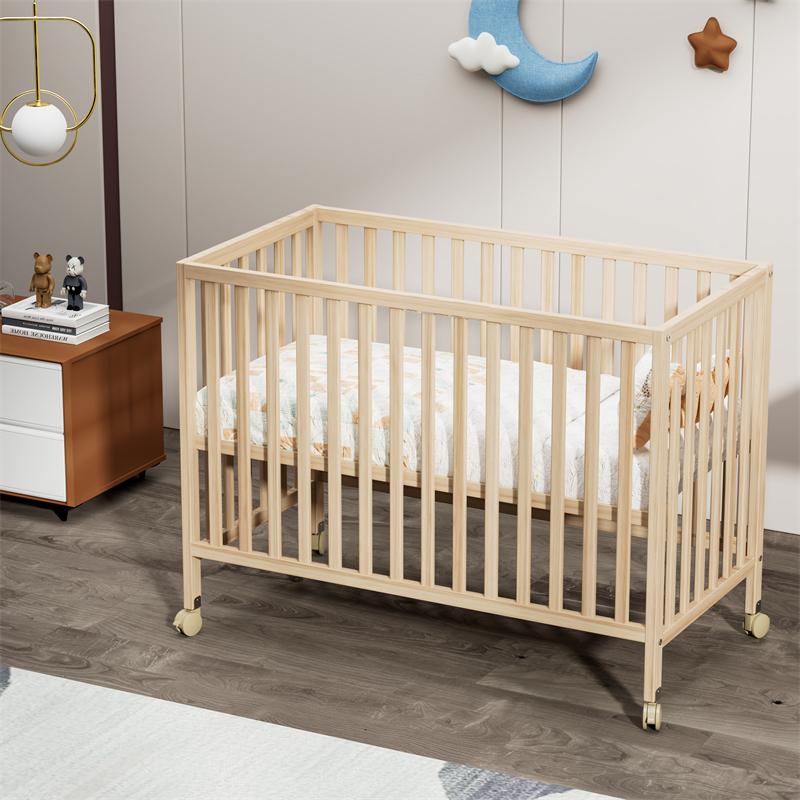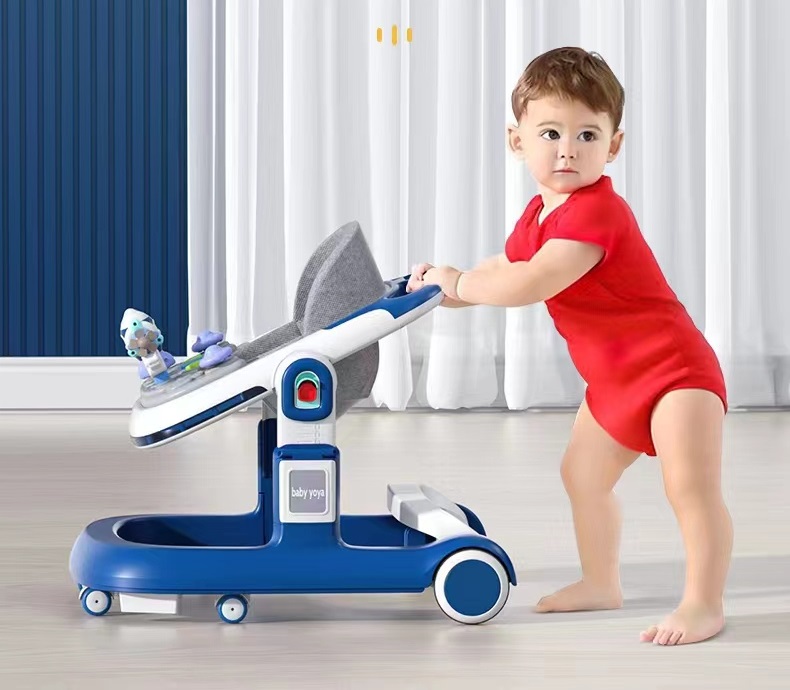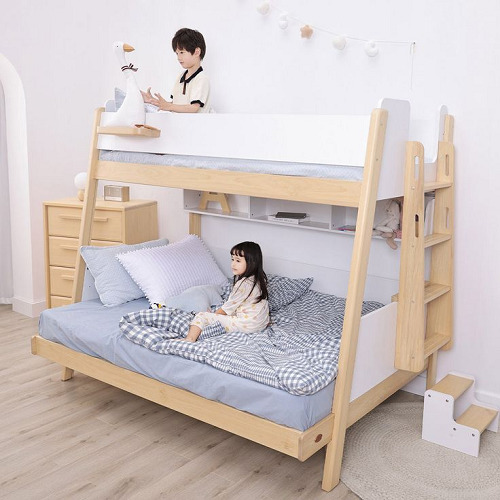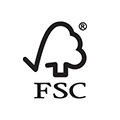Raising a newborn comes with its fair share of questions and concerns, particularly about the products designed to aid in their development and provide them with comfort. Among these products, baby bouncers have become a staple in many households. This guide aims to delve into the various aspects of baby bouncers to ensure parents and guardians are well-informed for the coming year, 2024.
Are Bouncers Safe for Newborns?
It is essential to understand that the safety of an infant bouncer heavily relies on two main factors: the design of the bouncer and how it is used by the caregiver.
Baby bouncer manufacturers design these products with the utmost consideration for a baby’s delicate physique, integrating features that ensure stability, comfort, and security. You need to choose a bouncer designed specifically for newborns and strictly follow the manufacturer’s guidelines. Baby bouncers can be safe for newborns when used properly and under supervision.
It’s also important to note that while bouncers can be a helpful tool in calming and entertaining a baby, they are not designed for prolonged periods of sleep. The American Academy of Pediatrics recommends that for sleep, babies should be placed on their backs on a firm, flat surface in a crib or bassinet. This is to minimize the risk of Sudden Infant Death Syndrome (SIDS) and to ensure a safe sleeping environment.
What Are the Benefits of a Baby Bouncer?
Baby bouncers offer several benefits for both babies and parents:
1. Soothing and Calming: Firstly, the gentle bouncing motion can be incredibly soothing for infants, and can help soothe and calm a fussy or colicky baby. The rhythmic movement mimics the sensation of being rocked or held, which many babies find comforting and even aids in better sleep patterns.
2. Hands-Free Time for Parents: A baby rocking chair provides a safe and secure place for your baby to rest while you attend to other tasks around the house. This hands-free time can be invaluable for parents to take care of chores, prepare meals, or simply take a moment to relax.
3. Promotes Development: Some baby bouncers come with toy bars or mobiles attached. These not only entertain the baby but also stimulate their visual and auditory senses, promoting early development. The reaching and grasping for toys can enhance motor skills, while the colorful and varying textures of the toys can support cognitive development.
4. Helps better digestion: Bouncers are designed to support babies in a semi-upright position, which can be beneficial for little ones suffering from reflux. This position helps in minimizing the discomfort caused by acid reflux, making it easier for the baby to digest their milk or formula. Some parents find that their babies nap comfortably in a baby bouncer, especially if they have reflux or prefer to sleep in a slightly elevated position. However, transition your baby to a flat, firm surface for sleep once they are asleep and supervised.
5. Portability: Many baby bouncers are lightweight and portable, making them easy to move from room to room or take with you when traveling. This versatility allows you to keep your baby close by while still having the flexibility to go about your daily activities.
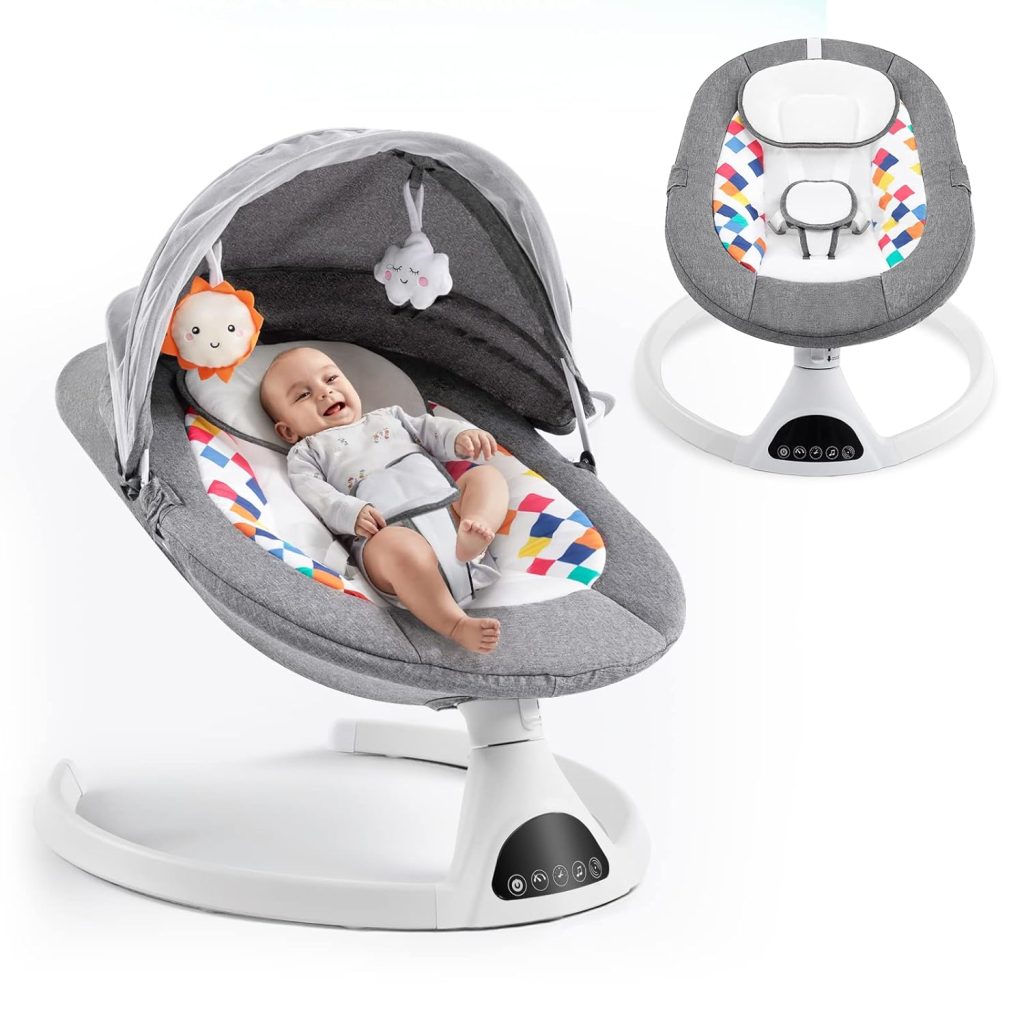
What Age Group Is the Bouncer Suitable For?
Baby bouncers are generally suitable for newborns and can be used up until a baby reaches a certain weight limit or developmental milestone, such as starting to sit up unaided. Generally, baby bouncers are suitable for infants from birth to around six months old or until they can sit up unassisted. However, there are different types of baby bouncers designed to accommodate various age groups:
1. Newborn Bouncers
Some baby bouncers are specifically designed for newborns and provide adequate support for their delicate necks and head. These bouncers often have reclined positions and secure harness systems to keep newborns safe and comfortable.
2. Infant Bouncers
As babies grow and gain more head and neck control, they can transition to infant bouncers with slightly more upright positions. These bouncers may have adjustable recline settings to accommodate babies as they develop.
3. Toddler Bouncers
Some bouncers are designed to grow with your baby and can be used in the toddler stage. These bouncers typically have adjustable features and higher weight limits to accommodate older and more active babies.
It’s significant to acknowledge that while bouncers can be utilized from birth, they should be used with increased caution in the early weeks. Newborns have limited neck strength, and as such, the bouncer’s recline position should be adjusted to accommodate this, ensuring the baby’s head and neck are properly supported. As the baby grows and gains more control over their neck and head movements, the bouncer’s position can be adjusted accordingly.
The transition away from the bouncer should be considered once the baby shows signs of being able to sit up independently or if they have reached the maximum weight limit specified by the manufacturer. As babies develop, they may become too mobile for the confines of a bouncer, and it’s essential to transition them to more appropriate play and seating options. Continuing to use the bouncer beyond this point can pose safety risks, including the potential for falls or the baby feeling constrained.
How Long Can My Baby Stay in a Bouncer?
Pediatric experts generally recommend that babies should not be in a baby bouncer seat for more than 20 to 30 minutes at a time. But the exact amount of time needed depends on your baby’s age, development, and comfort level.
Rocking chairs for newborns, it’s recommended to limit the time to short intervals, typically around 15 to 20 minutes at a time. Newborns have delicate necks and may not have the muscle strength to support their heads for extended periods. Additionally, prolonged periods in a bouncer can increase the risk of developing a flat spot on the back of the baby’s head.
As babies grow and gain more head and neck control, they can spend slightly longer periods in a bouncer. Aim to limit bouncer sessions to around 30 minutes to an hour at a time, and take breaks to allow your baby to move and stretch.
Once your baby becomes more active and mobile, they may become less interested in spending time in a bouncer. It’s essential to follow your baby’s cues and not force them to stay in the bouncer if they seem uncomfortable or restless. At this stage, you can encourage more active play and exploration in a safe environment.
Spending excessive time in a bouncer may limit a baby’s physical development opportunities, such as tummy time, which is essential for building neck, shoulder, and arm strength. Tummy time also promotes motor skills and helps prevent the flattening of the back of the baby’s head, known as positional plagiocephaly.
It’s also beneficial for babies to have a variety of sensory experiences throughout the day, including interaction with caregivers, which can be limited if a baby spends too much time in a rocker.
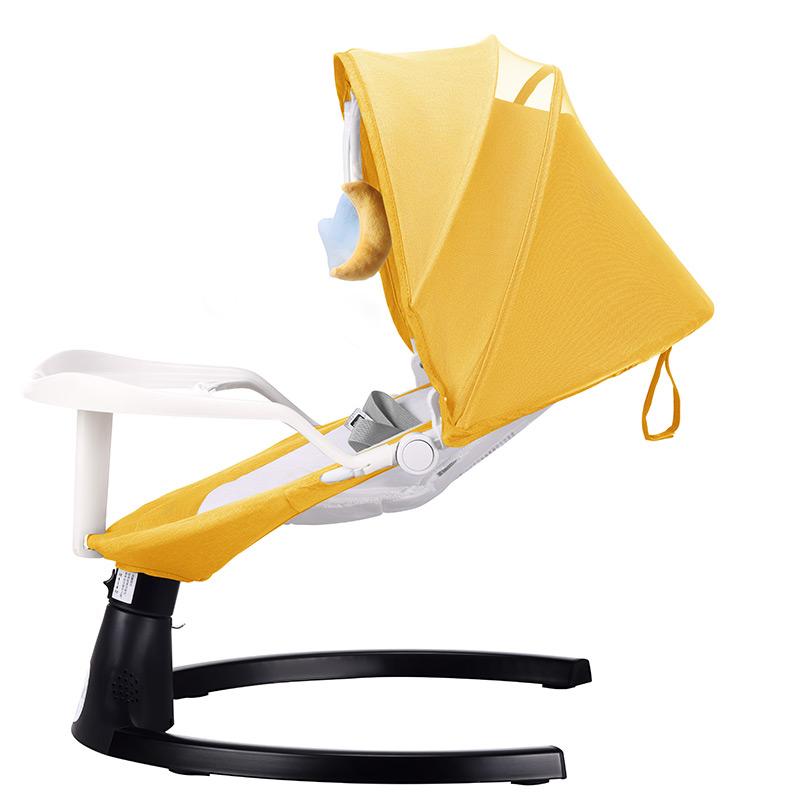
How to Use a Baby Bouncer?
Using a baby bouncer safely and effectively requires more than placing the baby in the seat. First and foremost, it is imperative to thoroughly read and understand the manufacturer’s instructions before use. This includes assembly instructions, weight and age guidelines, and safety precautions.
When placing the baby in the bouncer, ensure the harness is snug and secure to prevent the baby from slipping. The baby’s back should be supported by the bouncer’s seat, with their feet able to touch the base or kick freely without restriction. This position allows the baby to benefit from the bouncing motion without risk of injury.
It’s also advisable to use the bouncer on the floor, rather than on elevated surfaces like tables or countertops, even if the baby is securely harnessed. This minimizes the risk of falls caused by the bouncer tipping over or the baby’s movements shifting the bouncer’s position. Furthermore, keeping the bouncer away from hazards such as cords, heaters, or sharp objects is essential to ensure the baby’s environment is as safe as possible.
How to Clean a Baby Bouncer?
By following these steps, you can effectively clean your baby bouncer to keep it fresh, hygienic, and safe for your little one to use. Regular cleaning will help prolong the life of the bouncer and provide a clean and comfortable environment for your baby.
1. Check for Removable Parts: Many baby bouncers have removable fabric covers, seat pads, or harnesses that can be easily cleaned. Remove these parts according to the manufacturer’s instructions.
2. Machine Washable Parts: If the fabric covers, seat pads, or harness straps are machine washable, use a gentle cycle and mild detergent, and avoid using bleach or harsh chemicals.
3. Hand Washable Parts: If any parts of the baby bouncer need to be hand washed, fill a sink or basin with lukewarm water and mild detergent. Gently scrub the fabric covers or other parts with a soft brush or cloth, then rinse thoroughly with clean water.
4. Wipe Down the Frame: Use a damp cloth or sponge to wipe down the frame and any non-removable plastic or metal parts of the baby bouncer. Pay special attention to areas where dirt, crumbs, or spills may accumulate.
5. Sanitize if Necessary: If your baby has been sick or the bouncer has been heavily soiled, you may want to sanitize it. Using methods such as steam cleaning or wiping down with a solution of water and mild disinfectant.
6. Air Dry Thoroughly: Allow all parts of the baby bouncer to air dry completely before reassembling or using it again. Hang fabric covers or seat pads to dry or lay them flat on a clean surface. Avoid putting the bouncer back together while any parts are still damp.
How to Choose a Baby Bouncer?
The first consideration should be safety features, such as a sturdy frame, a secure harness system, and compliance with safety standards. Checking for product recalls and reading reviews can also provide insight into the safety and reliability of a bouncer.
Comfort is another critical aspect, with features like adjustable recline positions, soft fabric, and ergonomic design contributing to the baby’s overall comfort and support. Additionally, the ease of cleaning, with removable and washable covers, can make maintenance simpler for caregivers.
Parents and guardians might also want to consider the bouncer’s additional features, such as vibration settings, music, and toy bars, which can enhance the baby’s enjoyment and developmental benefits.
Portability and storage are also significant considerations, especially for families with limited space or those who travel frequently. A lightweight, compact, and foldable design can make the bouncer more convenient to use and store when not in use.
Tips for Using Baby Bouncer Safely
1. Supervise Your Baby: Never leave your baby unattended while they are in the bouncer, even for a short period. Ensure your baby’s safety and comfort by keeping a close watch on them at all times.
2. Use the Safety Harness: Always use the provided safety harness to secure your baby in the bouncer, even for very young infants. Make sure the harness is properly adjusted and snug, but not too tight.
3. Place on a Stable Surface: Always place the baby bouncer on a flat, stable surface away from hazards such as stairs, cords, or sharp edges. Avoid placing the bouncer on elevated surfaces like tables or countertops.
4. Avoid Overuse: Limit the amount of time your baby spends in the bouncer and provide a variety of play and rest positions throughout the day. Avoid using the bouncer as a substitute for supervised tummy time or other developmental activities.
5. Transition Carefully: As your baby grows and develops, be prepared to transition them out of the bouncer and into other seating or play options. Watch for signs that your baby is becoming too mobile or restless for the confines of the bouncer.
Conclusion
Baby bouncers can be a valuable addition to a family’s baby care arsenal, offering benefits for both the baby and caregivers. However, their safe and effective use requires careful consideration of the baby’s needs, adherence to safety guidelines, and regular maintenance. By choosing the right bouncer and using it responsibly, parents and guardians can provide their babies with a safe, comfortable, and engaging environment that supports their development and well-being.
Armed with comprehensive information and mindful practices, caregivers can navigate these choices with confidence, ensuring their little ones receive the best care possible as they grow and thrive in 2024 and beyond.
Recommended Related Articles:


